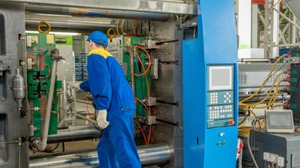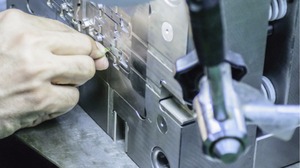Preventative mold maintenance seems like it should be a no-brainer. After all, we know the importance of preventative maintenance for most of our major investments like machinery, facility infrastructure and so on. It even carries over to our big-ticket personal expenditures: car, home heating system and house — to name a few. The importance of preventative maintenance, in general, isn’t a mystery.
 If it’s that easy, why wouldn’t a mold owner practice regular injection mold maintenance? There are actually many reasons. Below are a few.
If it’s that easy, why wouldn’t a mold owner practice regular injection mold maintenance? There are actually many reasons. Below are a few.
Why Shops Might Not Conduct Mold Maintenance
Maintenance requires tool downtime: It doesn’t have to be a lot of downtime — at least for regular preventative maintenance — but it exists. On a tight deadline, given the choice between conducting mold maintenance and hitting a delivery date, you’d have to search far and wide for the owner who would choose the latter.
Maintenance requires personnel: Similar to the above. An operator or other employee conducting maintenance is an operator who isn’t doing something directly related to production. Sometimes, that choice can be a difficult one to make. Again, if the options are “conduct maintenance” or “make parts,” you know the more likely choice.
Mold owners may not understand the full extent of the importance of preventative mold maintenance: There’s a reason we’re writing this article: It seems all too common for shops to experience mold failure, low part quality and other issues, in spite of an awareness of the importance of maintenance. There may be another root issue: preventative mold maintenance might be viewed as something you should do, rather than something you must do (if you want to keep your mold investment and overall part cost low).
Before we look at some of the items that should make up any preventative mold maintenance checklist, let’s take a brief, closer look at just some of the issues that can occur without maintenance, and why they are important.
Mold Maintenance Issues
Parts not to spec: There are a host of mold issues that can lead to parts being produced not to spec: material residue within the mold, rust, cracks or other damage to the mold, and trapped air or gas within the mold. Rejected parts mean more production cycles for you, so it’s important to ensure that quality remains high.
 Premature mold failure: Ignoring the small issues that are part of preventative mold maintenance and inspection just means that a big issue is more likely to occur soon — potentially damaging your mold, perhaps beyond repair. Even if the damage can be repaired, those repairs can be costly and lead to more downtime.
Premature mold failure: Ignoring the small issues that are part of preventative mold maintenance and inspection just means that a big issue is more likely to occur soon — potentially damaging your mold, perhaps beyond repair. Even if the damage can be repaired, those repairs can be costly and lead to more downtime.
Machine damage: One of the worst-case scenarios? A mold fails during a production cycle and damages a machine. Your maintenance costs can skyrocket in a situation like this, and the downtime issues for repair or replacement can make a huge negative impact on your capacity.
The overall, bottom-line impact of any or all of these issues: longer lead times and higher costs for you.
Now that we know just how bad it can get without regularly conducting injection mold maintenance, we can take a look at what you can and should do.
Basic Mold Maintenance
Conduct your most basic maintenance check before and after every cycle. This will help to keep parts to spec and ensure that no debris or other foreign matter can damage the mold. The below steps should comprise your standard, every-cycle process.
Clean mold cavities with a gentle solvent. Material residue within the cavity can affect the shape and structural integrity of your parts. A simple cleaning goes a long way.
Use compressed air to blow out dust, debris and water. Especially in more complex molds, those particles can be more difficult to reach. Don’t overlook them, however: They can affect the part and cause greater damage during the production cycle.
Be sure that the entire mold is completely dry before storage. We mentioned water above, but it bears repeating, because water is the worst enemy of metal molds. There’s one simple reason: Rust. A rusty mold is much more likely to fail or be damaged, and will produce a much higher proportion of rejected pieces. Caught early, mold can be cleaned and removed — though the best solution is simple prevention.
Check runners, sprues and all other areas of the mold. Just a reminder: The mold cavity isn’t the only area that needs to be inspected as part of your maintenance. Debris and water can cause big problems in other parts of the mold, as well. Be sure to inspect, clean and blow out those areas, too.
Inspect mold hardware and connectors. This step is an overall look at the major components of the mold, like bolts, plates and other pieces. Check them for wear, fit, tightness and other standard maintenance issues.
Note the date and extent of your mold maintenance steps. This step ensures that no matter who is conducting the maintenance, he or she knows the details (and any potential issues) from the last process. It’s also a great way to keep you and your employees accountable for regular maintenance.
More Advanced Mold Maintenance
These steps are just a few of those that should be conducted at longer intervals: say, every 10,000 cycles or every 10 days. While the above is a good overview of a basic yet effective preventative maintenance process, this area is more of a sample.
Inspect ejection pins and mechanisms. With an empty mold and the ejection mechanism fully engaged, inspect pins and other components for wear, damage or malfunction. This is also a good time to ensure that all ejection components are sufficiently lubricated. The more complex your ejection mechanism, the more involved this step should be.
 Inspect all mold components. While a daily visual check should be conducted for major components, as mentioned above, it’s also important to carry out a more detailed check at regular intervals (like every 50,000 or 100,000 cycles), as well. This involves checking springs, valves, O-rings, gaskets and other intricate mold components, and replacing them as necessary.
Inspect all mold components. While a daily visual check should be conducted for major components, as mentioned above, it’s also important to carry out a more detailed check at regular intervals (like every 50,000 or 100,000 cycles), as well. This involves checking springs, valves, O-rings, gaskets and other intricate mold components, and replacing them as necessary.
